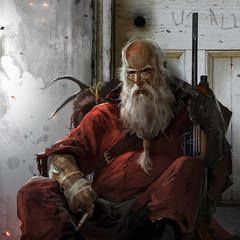-
Posts
316 -
Joined
-
Last visited
Awards
This user doesn't have any awards
About Aelita Sophie
- Birthday Mar 08, 1993
Contact Methods
-
Discord
Aelita Sophie#6587
-
Twitter
AelitaSophie
Profile Information
-
Gender
Female
-
Location
The Netherlands
-
Interests
Most tech related stuff. I like to be very broad.
-
Occupation
Self employed ICT and Mediamarketing
System
-
CPU
i7 4770k
-
Motherboard
MSI Z97 Gaming 7
-
RAM
32GB DDR3-2133Mhz Kingston Savage
-
GPU
Asus Strix GTX 970
-
Case
Corsair Obsidian 750D
-
Storage
Samsung 960 Pro 256GB NVMe
-
PSU
Corsair GS800
-
Cooling
Thermaltake FrioOCK
-
Keyboard
Logitech G910 Orion Spark
-
Mouse
Logitech G700s
-
Sound
Sennheiser HD 380 Pro + Samson G-Track
-
Operating System
Windows 10 64Bit
Recent Profile Visitors
1,527 profile views
Aelita Sophie's Achievements
-
Budget (including currency): around €200, €300 tops! Country: Netherlands Games, programs or workloads that it will be used for: OBS Streaming with capture cards (No gaming) Other details: Currently I have a few options to start with; HP ML360 G6, with a E5620, I have plenty of DDR3 ECC ram laying around, would need a GPU just for transcoding h.264 (Nvenc preferred, AV1 nice to have) AMD Ryzen 5 3600, ASRock AB350 Pro4, again need GPU, also I have only a spare 4GB DDR4, so would need ram. (Nvenc preferred, AV1 nice to have) In both cases it will run Win11, with 120GB SSD (S3) and a 1TB HDD (Using storage places in windows for caching). Minimum needed ram would be 16GB, and there will be 2 or 3 capture cards (Avermedia Live Gamer HD Lite PCIe). It will not run games, but will run a Bot for chat commands and redeems. Elgato Stream Deck, Behringer Mix panel. And running VSeeFace (3D Vtubing program). One of the capture cards will hold a signal of the actual Gaming PC (10th Gen i7, 32GB ram, RTX3070). Other capture cards will be consoles. My biggest aim is to spend just enough to have a "good enough" experience for this, as it's temporarily for maybe a year. Personally I was thinking of the Ryzen 5 system, adding 16GB of ram (even ECC as its cheaper) and just go with a GTX960? or a GTX 1650? I was hoping for the Intel ARC cards, but so far, it seems like it will take quite some time for it to be actually in shops in The Netherlands. The ML360 G6 would potentially be the cheapest (no need to buy ram) but I have concerns with the E5620 performance. I do have other CPU's for it, like a X5560. So I'm not entirely sure what to go with. Would a GTX 960 be enough, or will the GTX 1650 serve me better in this case. (Transcoding) A GPU with AV1 hardware encoding would be great, but since there is no support for it yet on Twitch, it's not a must, but in that case, I would prefer to save some money, to spend on that upgrade later.
-
Aelita Sophie changed their profile photo
-
So I'm a little bit torn in between looking at the performance numbers. Where AMD has the advantage of a massive amount of cores/threads and Intel has the advantage of a better single-core performance. I mainly play VRChat and like to daddle into streaming as well. I'm aware that VRChat favours single-core performance. But then again, while streaming the Ryzen CPU seems a better idea. Plus VRChat is getting better and better in handling multiple cores. I use a fullbody setup, using an Oculus Rift CV1 with 3 Rift sensors and 3 HTC Vive Tracker 2.0 pucks with 2 HTC Vive Lighthouse (1.0). I pretty much always use fullbody and I usually play on a daily basis. My current system is as follows; AMD Ryzen 5 3600 with an "OC" profile at 4.2 Ghz all-core 32GB DDR4-2666 running at 3200 ASRock AB350-Pro4 (Motherboard will be replaced in both scenarios, it already has trouble keeping up with the 3600 regarding VRMs) Gigabyte RTX 2070 Windforce3 (Curved overclock, roughly at 2000Mhz, memory not overclocked) CoolerMaster RM360 rgb thing, forgot the exact name Corsair GS800 800Watt (Yes, I know old, will be replaced by a Seasonic Core Gold GM500) 1TB Intel P660 (or was it 660p?) NVMe SSD Lian Li O11-Dynamic Der Bauer Case CPU usage in VRChat without streaming hovers on average at 60-70%, while streaming at 80-90% GPU usage in VRChat without streaming hovers on average at 30-40%, while streaming 40-50% Framerate in VRChat without streaming usually around 70-90 FPS in decently optimized worlds with a moderate amount of players (~10), unoptimized or a lot of players (25+) around 40-50 FPS Framerate in VRChat with streaming usually around 60-80 FPS in decently optimized worlds with a moderate amount of players (~10), unoptimized or a lot of players (25+) around 20-30 FPS If I look at a per-core behaviour it seem to spike 2-4 Threads to 90-100% where others are 60-80% on your average load in-game. Considering the CPU usage and GPU usage, it seems to me its a bottleneck from the CPU just not being adequate when I'm also streaming. tLdR; Do I go for Single-core performance or do I go for vastly more cores/threads? Both would be a significant upgrade.
-
on my i7 4770k it was even worse. There are no cores that are pegged at 100%. Some of then are slightly higher then others, but in general they are all around the 10% or 15-20% mark (when 90 FPS)
-
That would be total usage
-
Hello there! So, I'm quite aware that VRChat's performance is abysmal in general, because they use an out-dated unity. Only DX11 and their networking issues. However my main concern that I should have plenty of horse power to have decent performance, but I just don't get the framerate I should have. Usually when I'm in a room with a few people, I dip down to 45 FPS or sometimes even loser (like 20-30FPS which is not bareable with a headset on your face) I use the Oculus Rift CV1 and the following hardware: 2x Intel Xeon E5-2690 128GB DDR3 ECC ram GTX 1060 6GB (Overclocked with a curve on the Core of about 190Mhz and 650 Mhz overclock on the memory) When in a room with 90FPS, my GPU usage is usually around the 60% usage mark and my CPU right about 15-20% When in a room with 45 FPS or lower, my GPU usage is about 20%, clocked down on its own and my CPU is a nice 10%. In my eyes it doesn't make sense. I get that the bigger the room, the more players, the more load. However, for some reason VRChat decides to use even less resources to make up for it? Changing settings like dynamic bone limitations, or block every avatar doesn't yield any difference. Any idea how I could resolve this? Thanks!
-
Little push
-
Well, I'm european, and our houses aren't build like that. Especially since this house is from the early 1950s (if im not mistaken), I can't easily make those adjustments. All the walls are solid, either concrete or gas-concrete. The conduit I managed to get into the wall, by literally chopping in the wall with a big hammer drill, put in the conduits with the proper bends, boxes etc. And then filling it up again with plaster. Is quite smaller then a HDMI connector. 1 Conduit passthrough can hold about 3 Cat6 cables snuggly. I've got 3 conduit lines, so enough for 9 cables. 6 for screens, 2 for USB (got 2 systems here) and 1 for shared audio streams (if I ever going to do that, might just pick up USB Audio boxes) Anyhow, I'm asking if I should go with a HDMI Amplifier or just go with a HDMI over Ethernet system instead of a HDMI to RJ45 converter. I'm well aware that the latter can introduce some output lag.
-
Can't pull those throught the conduit. Connector is bigger then the diameter of the conduit
-
Currently 1 of the screens sometimes turns black, the other screen sometimes has red lines and also occasionally turns black. These are typical indications that the incoming signal is to weak. The setup: I've got my PC in a separate room. On the GTX1060 6GB I've connected 2 DisplayPort to HDMI connectors. (Generic Aliexpress) On that connector I've got a HDMI to RJ45 (Cat5e/Cat6) converter. The "not-the-cheapest"-kind, thus only 1 ethernet cable is needed per screen instead of 2. I've tested this out with several lengths of Cat6 cable, and typically it was working fine. But with the issues as described above. Now this doesn't happen constantly, only once in a while. However the red lines happens the most. Using a HDMI cable works fine, but don't have the required length (about 20ft) and aren't easily pushed through conduit in the wall. So clearly it isn't working properly. I personally think it's due the length of the Cat6 cable, losing it's signal strength. However my budget isn't as big and from what I know, I have 2 options: Option 1: Put a HDMI repeater/amplifier before it goes to the Cat6. ( for example https://www.aliexpress.com/item/-/32833277921.html?spm=a2g0s.8937460.0.0.417f2e0ePc1kTb ) Option 2: Replace the HDMI to RJ45 converters with HDMI over Ethernet adapters. ( for example https://www.aliexpress.com/store/product/Elistooop-1080p-3D-HDMI-Transmitter-Receiver-60M-HDMI-Extender-US-EU-Plug-Cat-5e-6-RJ45/3221116_32863267761.html or https://www.aliexpress.com/store/product/Neoteck-1080P-60m-HDMI-Extenders-HDMI-Repeater-Over-Cat-6-Cat-7-Ethernet-Cables-With-IR/3282010_32841826245.html ) What do you guys think? (Also, yes there is also some interference due the fact that my gaming-rig is in a serverrack, with a bunch of servers. Of which the cablemanagement.. well.. doesn't exist yet)
-
I can hardly call myself even a novice within this kind of work. I simply doodle a bit and hope for the best. I have no clue how to measure impedance, how would I do such thing?
-
Cant give exact measurements, as my equipment is very cheap. (Multimeter was like €5) But I'm measuring about 1.2 Ohm over a length of 6 meters.
-
This is pretty much where it goes through
-
Well good question... I might just be over engineering this.. Putting it like that, how I've got the PCB designed right now, should work fine. (Just for a neat solution, as it allows me to hook up 2 usb ports and even a powerrail if needed) Have you tested the dataspeeds? I don't need full USB2.0 specs, but those adapters are abysmal. Anything half-way the USB2.0 specs would be great! Because considering the adapters I've got right now. Keyboard + mouse would be fine, but adding a mic, usb audio and an occasional USB-Stick would not work out. Because with those data-rates it would be pushing it very hard.






